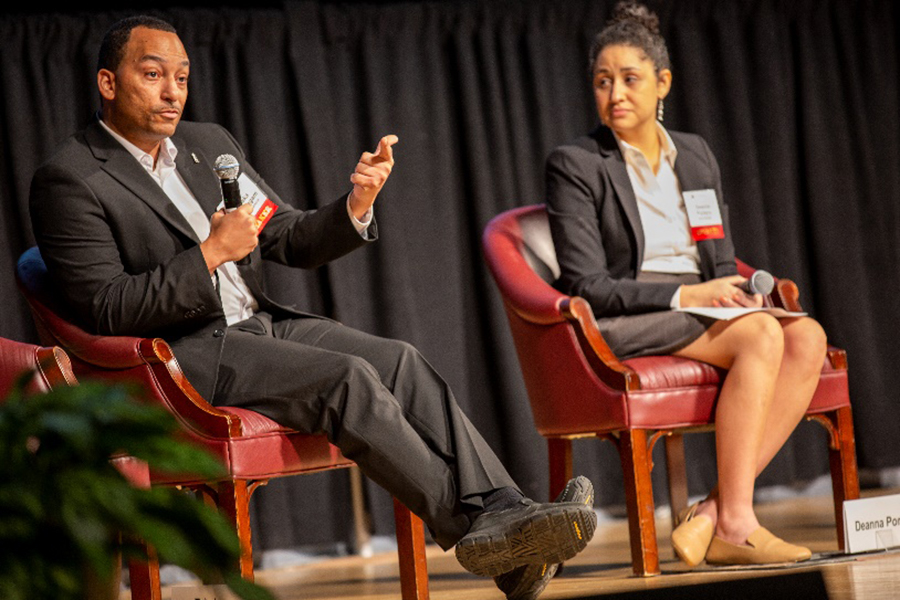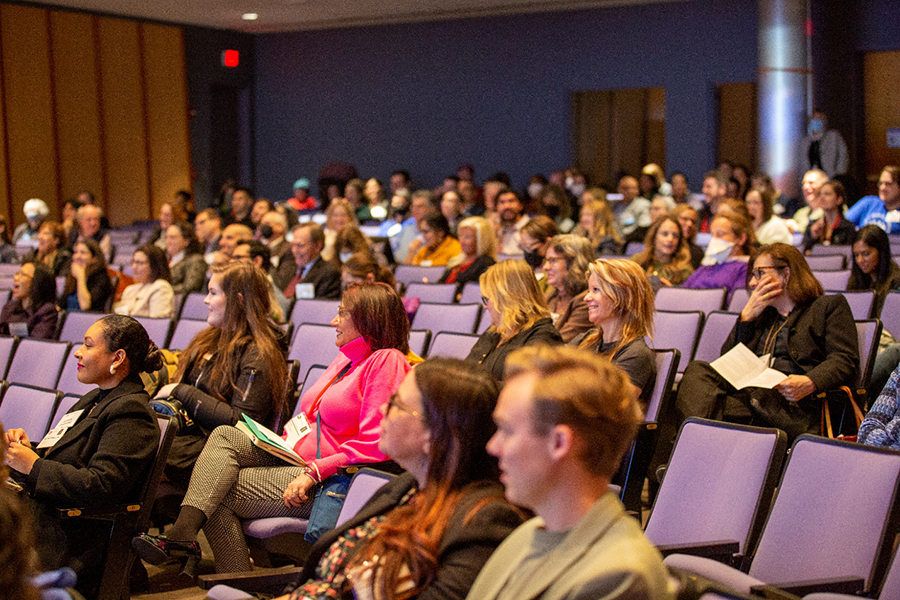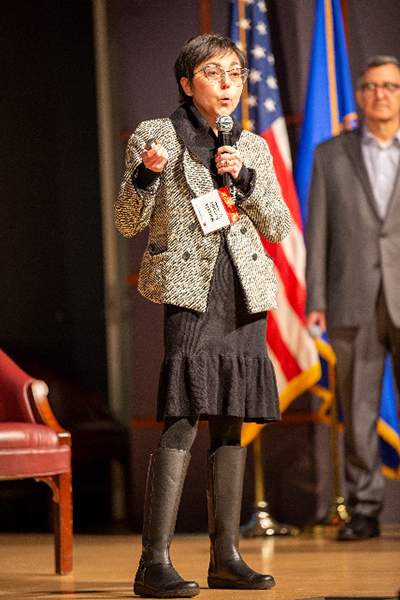Rare Disease Day at NIH 2023: Putting Hope Into Action
March 21, 2023
On Feb. 28, 2023, the halls of Natcher Conference Center on the NIH campus were filled with excitement and hope for Rare Disease Day at NIH. Co-sponsored by NCATS and the NIH Clinical Center, the event raises awareness about rare diseases, the people they affect, and NIH partnerships that address research questions and advance knowledge of new treatments. This year, Rare Disease Day at NIH was held in person for the first time since 2020. Participants also had the option to attend virtually via the NIH VideoCast.
The event featured research on rare diseases, with a focus on patient experiences. Session topics included NCATS rare diseases programs and resources; the needs of adolescent and young adult rare diseases patients; diversity, equity and inclusion as related to genetics and gene-targeted therapies; and rare diseases treatments and the role of advocacy and industry partnerships. The speakers included researchers, clinicians, patients, caregivers and policymakers.
Rare diseases are individually rare but collectively common; they affect 30–40 million people in the United States and nearly 400 million people worldwide. Of the more than 10,000 known rare diseases, only 5 percent have U.S. Food and Drug Administration (FDA)–approved treatments. During her remarks, Joni L. Rutter, Ph.D., NCATS director, emphasized that rare diseases are a critical public health challenge. Rutter urged attendees to reflect on the meaning of Rare Disease Day for the rare diseases community.
“This day is about pausing to remember loved ones that we’ve lost, to celebrate the big and small wins, to support those who work tirelessly in caring for people with rare diseases, and to honor all people with rare diseases … and to hear about new ideas and projects that spell hope,” Rutter said.
Shining a Light on Rare Diseases Community Points of View
The stories told at the event helped shine a spotlight on people with rare diseases, their families and their communities. Often, people with rare diseases play an active role in advocating for — and sometimes helping conduct — research on their conditions.
Abbey Hauser compared her experience to steering a ship. As a young adult, Hauser became the captain of her “rare disease ship” by coordinating her own treatment for Ehlers-Danlos syndrome, a rare connective tissue disorder.
Marcela A. Ferrada, M.D., spoke on her journey as a scientist. Her life was disrupted when she was diagnosed with relapsing polychondritis, a rare degenerative disease that causes inflammation of cartilage in the body. Ferrada changed her career, switching research fields to study her own disease.
“Where there is research, there is hope,” Ferrada said.
Stories like Hauser’s and Ferrada’s are examples of the complex and dynamic role played by many people with rare diseases. Lawrence A. Tabak, D.D.S., Ph.D., who is performing the duties of the NIH director, underscored the importance of partnerships in rare diseases research.
“The work of improving life for people with rare diseases will take the concerted efforts of all of us — scientists, caregivers and patient advocates with both public and private investment,” Tabak said.
Fostering Diversity, Equity and Inclusion in Rare Diseases Research
Recent advances in genetics and gene-targeted treatments offer great promise for the rare diseases community. Many of these advances, however, are based on research focused on people of European descent because other ethnic groups often have not been included in clinical research. Additionally, people of lower socioeconomic status often cannot access costly new treatments. In a session on this topic, panelists spoke on the importance of promoting diversity, equity and inclusion in rare diseases research.

Tshaka J. Cunningham, Ph.D., talks about the importance of supporting the next generation of minority scientists. (NCATS)
The speakers discussed community trust in medical research and training the next generation of minority scientists. They also talked about genetic variation in genome-editing technologies and the history of scientific racism. Tshaka J. Cunningham, Ph.D., highlighted his work through the Future Kings Biomedical Sciences Program. The program helps young men from underserved communities access scientific training during their secondary education.
Future Kings scholars have conducted experiments focused on eosinophilic esophagitis, a rare disease that affects one of the program members. Cunningham stressed the importance of programs like Future Kings to promote diversity in research.
“My message to all of us is to invest in programs like [Future Kings] and continue the great work in the community, not only to improve diversity in genomics and precision medicine, but our understanding of rare disease,” Cunningham said.
Using Advocacy and Industry Partnerships to Advance Rare Diseases Therapeutics
During the final session, panelists spoke on the importance of advocacy–industry partnerships for developing treatments that will reach more patient communities.

Brian Wallach, J.D., (top left) and Sandra Abrevaya, J.D., (top right) share advice with other rare diseases advocates. (NCATS)
Brian Wallach, J.D., and Sandra Abrevaya, J.D., Wallach’s spouse and caregiver, shared how they founded I AM ALS to help inform their community about clinical trial opportunities for amyotrophic lateral sclerosis. They also worked with industry partners to make trials more patient-friendly and ensure that patients and caregivers were involved in the trial design. Now, Wallach and Abrevaya are sharing their resources with other communities.
“We have built a great relationship with industry, and we are working together to help advance as many treatments as possible … In doing this, in your own diseases, do not be afraid to ask questions or ask people to help,” Wallach said. “That way, you have the ability to empower yourself and to identify the gaps that you can help fill to drive forward to a treatment.”
The event culminated with an unexpected and emotional announcement by Ronald J. Bartek, co-founder and president of Friedreich’s Ataxia Research Alliance: The FDA had approved the first drug for Friedreich’s ataxia, a rare disorder that affects the nervous system. The news marked a great moment for the rare diseases community. It also underscored the importance of continuing to work together to turn hope into action for more rare diseases.




